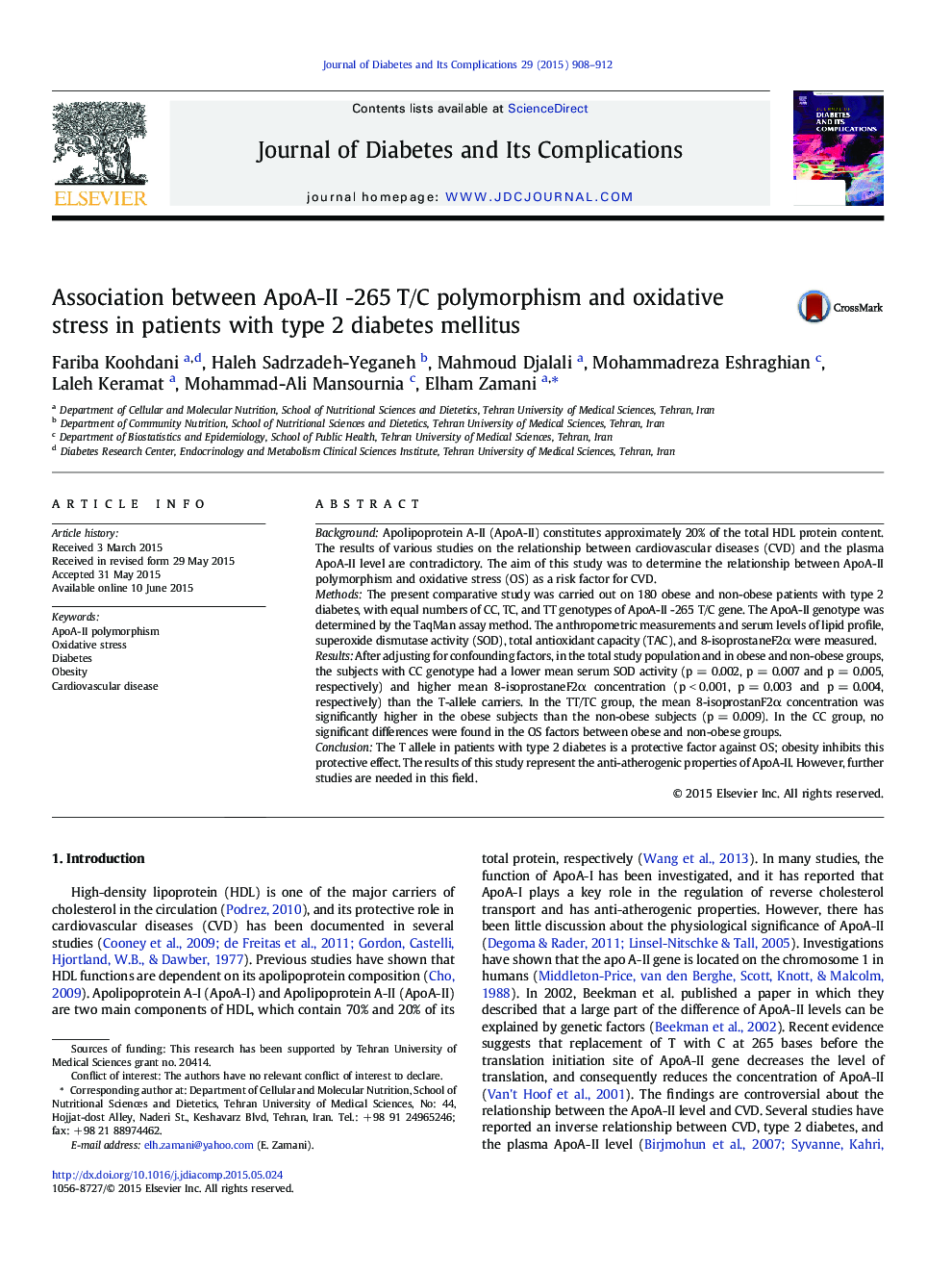| Article ID | Journal | Published Year | Pages | File Type |
|---|---|---|---|---|
| 2804121 | Journal of Diabetes and its Complications | 2015 | 5 Pages |
BackgroundApolipoprotein A-II (ApoA-II) constitutes approximately 20% of the total HDL protein content. The results of various studies on the relationship between cardiovascular diseases (CVD) and the plasma ApoA-II level are contradictory. The aim of this study was to determine the relationship between ApoA-II polymorphism and oxidative stress (OS) as a risk factor for CVD.MethodsThe present comparative study was carried out on 180 obese and non-obese patients with type 2 diabetes, with equal numbers of CC, TC, and TT genotypes of ApoA-II -265 T/C gene. The ApoA-II genotype was determined by the TaqMan assay method. The anthropometric measurements and serum levels of lipid profile, superoxide dismutase activity (SOD), total antioxidant capacity (TAC), and 8-isoprostaneF2α were measured.ResultsAfter adjusting for confounding factors, in the total study population and in obese and non-obese groups, the subjects with CC genotype had a lower mean serum SOD activity (p = 0.002, p = 0.007 and p = 0.005, respectively) and higher mean 8-isoprostaneF2α concentration (p < 0.001, p = 0.003 and p = 0.004, respectively) than the T-allele carriers. In the TT/TC group, the mean 8-isoprostanF2α concentration was significantly higher in the obese subjects than the non-obese subjects (p = 0.009). In the CC group, no significant differences were found in the OS factors between obese and non-obese groups.ConclusionThe T allele in patients with type 2 diabetes is a protective factor against OS; obesity inhibits this protective effect. The results of this study represent the anti-atherogenic properties of ApoA-II. However, further studies are needed in this field.
